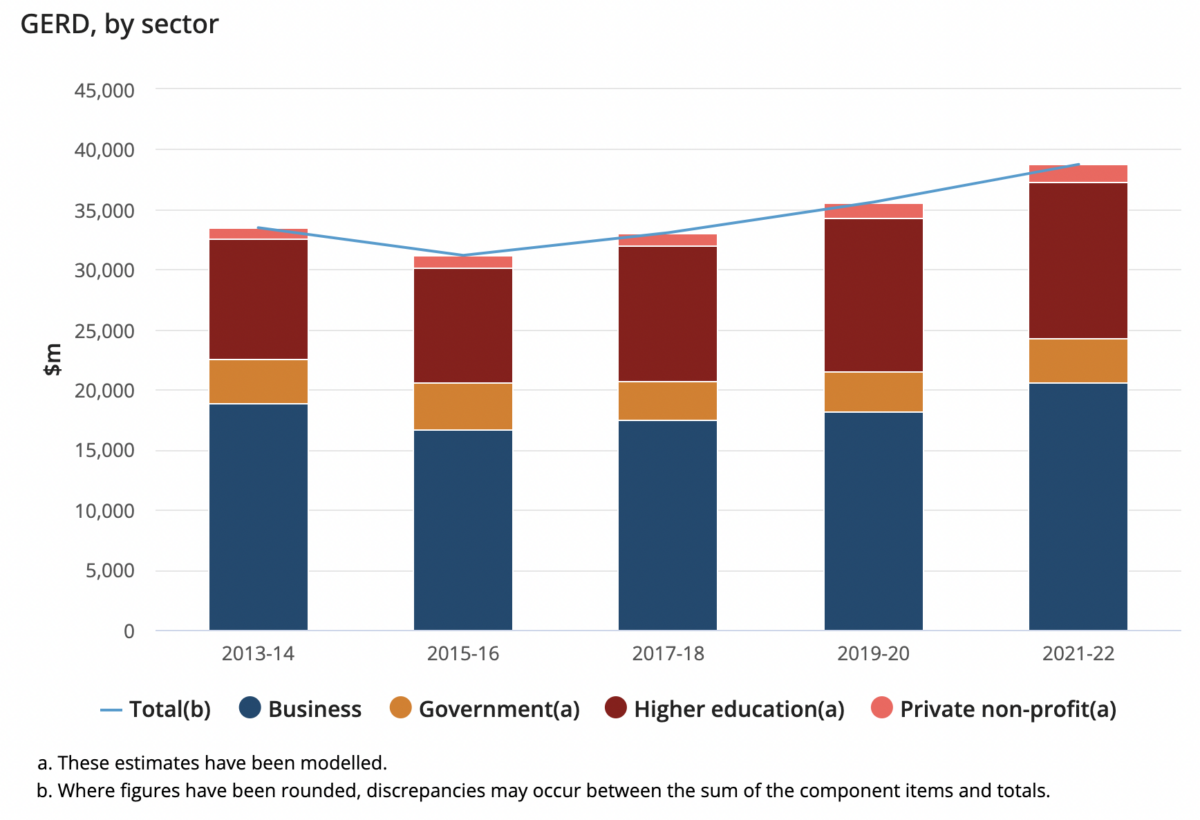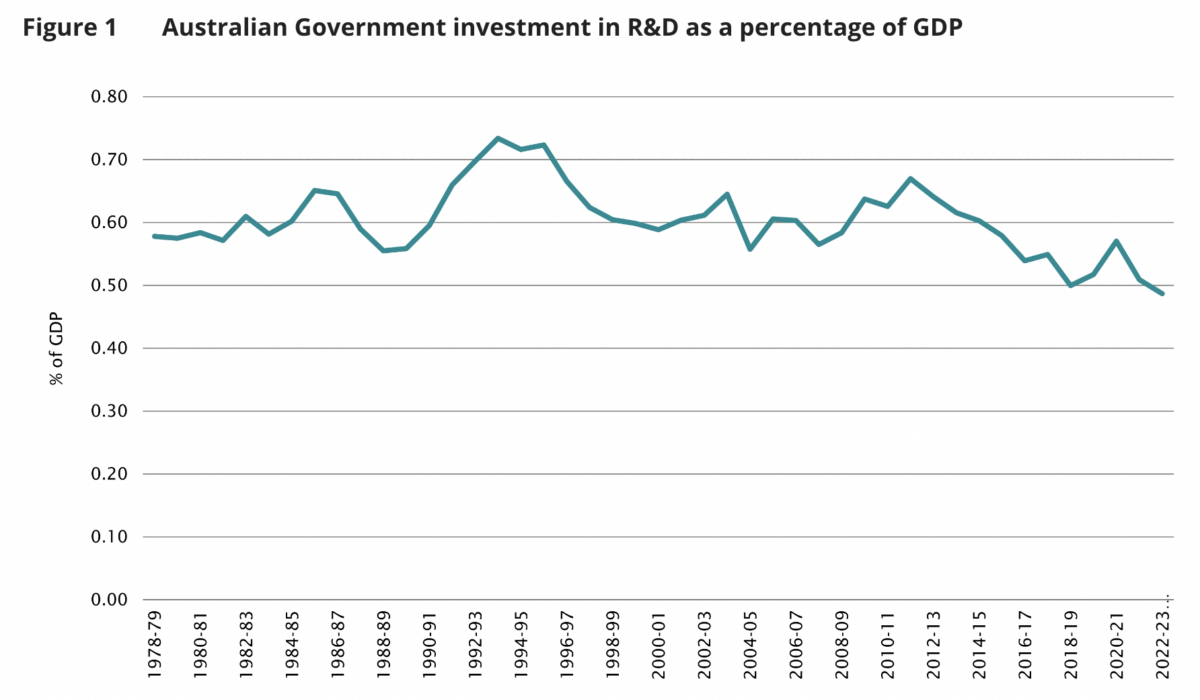Recent figures from the Australian Bureau of Statistics show Australia’s overall national investment in science and research and development (R&D) continues its 14-year decline. Despite federal Labor’s policy to lift R&D expenditure to 3% by 2030, the 2022/23 budget is forecast to actually decrease spending in the area.
Among the 38 member countries of the Organisation for Economic Co-operation and Development, or OECD, Australia ranks third last for its R&D spend, ahead only of New Zealand and Ireland.
For OECD nations, the average R&D expenditure as a percentage of gross domestic product (GDP) currently sits at 2.74%. Australia’s gross expenditure sat at just 1.68% in 2021/22, falling from 1.8% in 2019/20, according to figures from the Australian Bureau of Statistics (ABS).
This is almost three times less than frontrunner South Korea, which spent 4.8% in 2022. The US, Japan, and Germany spent 3.47%, 3.27%, and 3.13% respectively.

Australian Bureau of Statistics (ABS)
Alarmingly, in May Dr Robyn Prior published budget analysis on the Parliament of Australia’s website forecasting 2022–23 expenditure to be just 0.49% of GDP (though it seems Dr Prior is using slightly different metrics to the ABS, as her analysis lists previous expenditure at 0.6%, rather than the ABS’ 1.6%). This, she writes, “is the lowest level since the beginning of the data series in 1978–79.”
The lack of capital in Australia to support burgeoning innovation is a major theme at clean energy industry events. The divide is rapidly intensifying as well with countries like the US, China, India, South Korea and others upping investment to compete in what is being described as a global “race” capture the manufacturing market for clean energy technologies.
While the lack of bold capital expenditure is felt throughout the industry, Kirk McDonald, Project Manager at Supercharge Australia, an organisation working with energy startups, has said the dearth of government support means Australia is rapidly losing the innovative technologies which would underpin future success. “The money is coming thick and fast for [startups] to leave, for them to go overseas,” McDonald said at a critical minerals summit held in June.
The “brain drain” phenomenon has historically plagued countries with low GDPs, but is now afflicting Australia where governments, especially at a federal level, remain skittish about investment.
“Australia urgently needs to develop a 10-year plan to boost government, higher education and business investment in R&D, so we are equipped to manage a large-scale energy transition, an ageing population, and develop critical national security technology,” Australian Academy of Science President, Professor Chennupati Jagadish, said.
“Australia has one of the world’s least differentiated economies,” Professor Chennupati Jagadish said. “We remain vulnerable when our prosperity relies on such a narrow range of industries.”
“It is imperative we improve Australia’s economic complexity, which can be driven by a more strategic focus on science and research—the fuel for innovation and industry growth,” he added.
This content is protected by copyright and may not be reused. If you want to cooperate with us and would like to reuse some of our content, please contact: editors@pv-magazine.com.









By submitting this form you agree to pv magazine using your data for the purposes of publishing your comment.
Your personal data will only be disclosed or otherwise transmitted to third parties for the purposes of spam filtering or if this is necessary for technical maintenance of the website. Any other transfer to third parties will not take place unless this is justified on the basis of applicable data protection regulations or if pv magazine is legally obliged to do so.
You may revoke this consent at any time with effect for the future, in which case your personal data will be deleted immediately. Otherwise, your data will be deleted if pv magazine has processed your request or the purpose of data storage is fulfilled.
Further information on data privacy can be found in our Data Protection Policy.